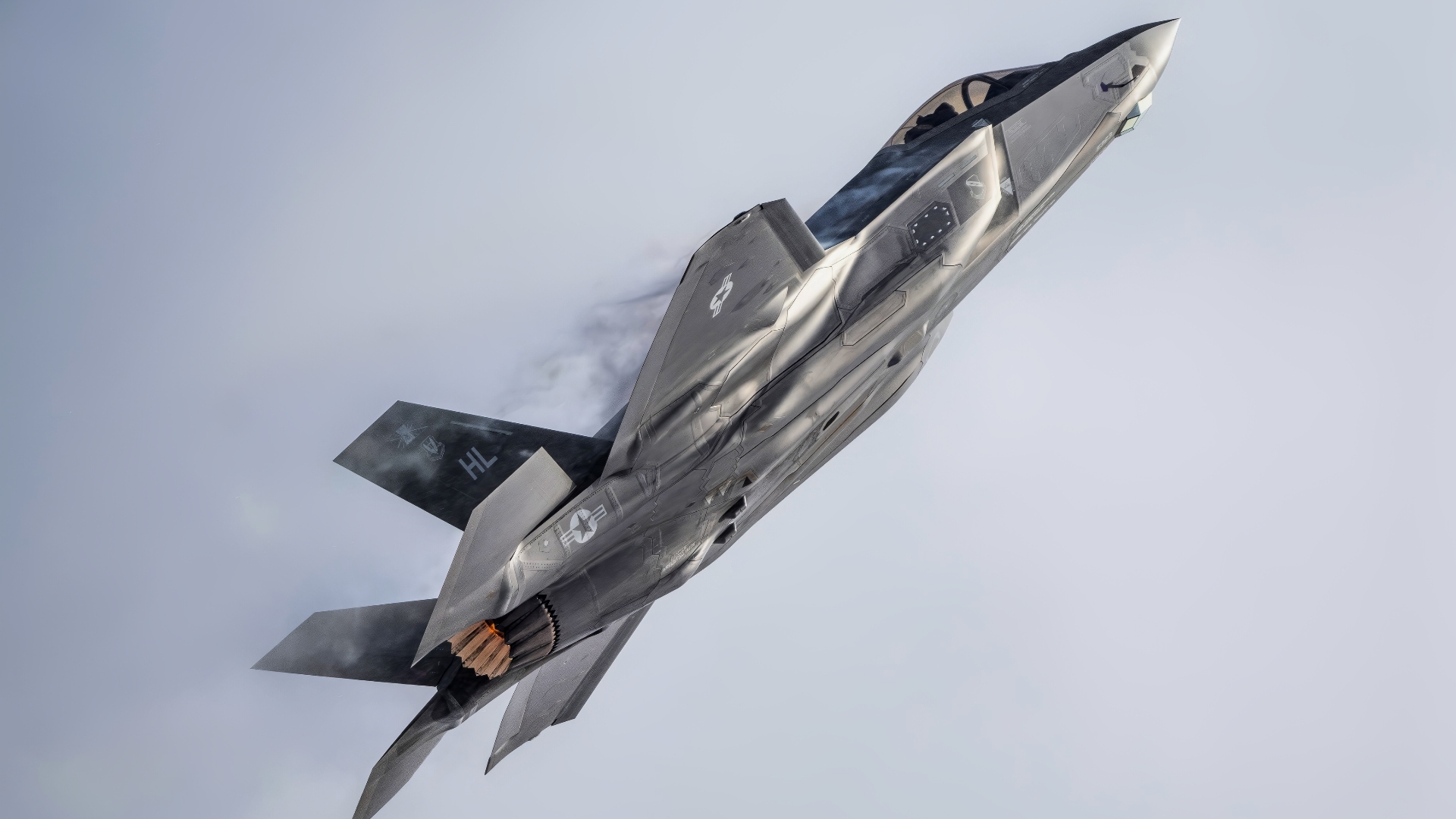Article Summary – Japan’s shift to a massive F-35 fleet hasn’t made the Mitsubishi F-2 obsolete—it’s turned it into a specialist.
-Derived from the F-16 but 25 percent larger, the F-2 carries more fuel, more weapons, and, crucially, indigenous ASM-1/ASM-2 anti-ship missiles guided by AESA radar.

U.S. Air Force Maj. Taylor “FEMA” Hiester, F-16 Viper Demonstration Team commander and pilot, performs aerial maneuvers in an F-16C Fighting Falcon during an air show at Marine Corps Air Station Yuma, Ariz., March 15, 2025. The flight demonstration highlights the versatility of the F-16, a multi-role fighter aircraft proficient in both air-to-air and air-to-ground combat. (U.S. Air Force photo by Senior Airman Steven Cardo)
-With a modest combat range but high speed and 13 hardpoints, it is optimized to scramble over coastal and island waters, hunting ships while also serving as an interceptor.
-In a future fight, stealthy F-35s would penetrate, sense, and cue targets, while F-2s act as arsenal planes, unleashing standoff firepower at enemy fleets.
-Japan’s massive migration to the F-35 might lead some to overlook the continued significance of the country’s famous ship-destroying Mitsubishi F-2, a high-speed multi-role fighter emerging from the General Dynamics F-16 Falcon.
F-2 Fighter History
Emerging in the early 2000s, the F-2 was the result of a key collaborative effort between US-based Lockheed Martin and Mitsubishi Heavy Industries to build an F-16-like variant for the Japan Air Self-Defense Forces.
Although only 98 F-2s were manufactured, the jet has a specialized ability to leverage AESA radar and track ships from effective standoff distances.
Anti-Ship Attack
The F-2 is 25 percent larger than the F-16 to allow for up to 13 weapons hard points and much greater internal fuel storage.

F-16 Fighting Falcons assigned to the 114th Fighter Wing sit ready on the ramp while conducting an elephant walk at Joe Foss Field, South Dakota, July 2, 2025. The 114th Fighter Wing conducted an elephant walk to demonstrate its ability to project fighter airpower. (U.S. Air National Guard photo by Master Sgt. Luke Olson)
The heavier weight enables the fighter to carry a larger load of anti-ship missiles and operate over a wider combat radius, something likely intended to defend Japan’s extensive coastal and island areas from maritime attack.
The F-2’s effectiveness as an anti-ship platform is bolstered by the Japanese-produced ASM-1 and ASM-2 missiles, which use inertial guidance and dual-active radar homing.
The primary mission of the F-2 relates to defending Japan’s coastal areas from potential Russian or Chinese intrusions, so they need to operate with the capacity to scramble quickly.
The F-2 is equipped with an M61 Vulcan cannon and can carry a variety of air-to-air missiles, including the Japanese-developed AAM-3 and AAM-4, and the American-made AIM-7 Sparrow and AIM-120 AMRAAM, to fulfill this interceptor role.

F-16A Fighter. Image Credit: National Security Journal.
High-Speed, Low-Range
Despite being larger than the F-16, the F-2 reaches Mach 2.0, but not without range trade-offs.
The combat range of the F-2 is cited as 518 miles, roughly one-half that of an F-35B, which can operate up to 1,300 miles.
Arsenal Plane
Although there are not many F-2s in service, the aircraft seems quite relevant and well-positioned to support Japan’s fast-growing fleet of F-35s.
In recent years, Japan has acquired $35 billion worth of F-35s, many of which are F-35Bs.
Japan regularly deploys F-35Bs on its mini-carriers and is quickly manufacturing a large fleet, often conducting joint, collaborative exercises with the United States in the Pacific.
It seems that operating F-2s in support of Japan’s F-35s could prove tactically useful, as they could provide heavy stand-off support firepower in a maritime warfare environment.
F-35s can achieve air superiority and target identification with 5th-generation sensing, while F-2s brought heavy air-launched anti-ship cruise missiles capable of attacking enemy ships.

A U.S. Air Force F-35A Lightning II assigned to the F-35A Lightning II Demonstration Team performs a practice airshow performance at Hill Air Force Base, Utah, Jan. 11, 2023. The F-35 Demo Team performs rehearsal flights regularly to maintain flying certifications and to uphold and maintain their mission and Air Force recruiting standards. (U.S. Air Force photo by Staff Sgt. Kaitlyn Ergish)
The F-35’s primary advantage is its stealth and situational awareness, making it ideal for the initial entry into contested airspace to establish air superiority or conduct high-value strikes.
The F-2 can then be used in a follow-on capacity for missions where stealth is less critical or a higher volume of firepower is required, such as sustained maritime strike or defensive counter-air missions in secure areas.
By using the F-2 for less demanding missions, the Japan Air Self-Defense Force can manage the operational tempo and preserve the F-35 fleet for scenarios where its fifth-generation capabilities are essential for survival and mission success.
Essentially, the F-35 can bring penetrating capability and information dominance to a combat theater, and the F-2 could provide anti-ship support.
About the Author: Kris Osborn
Kris Osborn is the President of Warrior Maven – Center for Military Modernization. Osborn previously served at the Pentagon as a highly qualified expert in the Office of the Assistant Secretary of the Army—Acquisition, Logistics & Technology. Osborn has also worked as an anchor and on-air military specialist at national TV networks. He has appeared as a guest military expert on Fox News, MSNBC, The Military Channel, and The History Channel.
More Military
The YF-23 Black Widow II Stealth Fighter Almost Made the Ultimate Comeback
The New Leopard 2A8 Tank Has a Message for the Russian Army
The F-22J Raptor Stealth Fighter Will Never Fly For Japan (China Is Smiling)










